Techno-Optimist #20
The world's biggest AI datacenter, quantum internet, NASA's Parker Solar Probe touches the Sun, microbots mimic ants, Neuralink might have some competition...and a whole lot more.
Happy New Year, and welcome to the twentieth edition of Techno-Optimist, your go-to destination for all the latest updates and commentary on space, science, technology, medicine, energy, AI, and much more. I hope you all had a great Christmas and New Year—it’s hard to believe that we’re in 2025 already—I think it’s going to be an exciting year.
I hope you’ll indulge me for a moment here as I share a personal meditation. I was reading the Bible recently, and came across this verse:
"There remains very much land yet to be possessed."
–Joshua 13:1b
It stuck out to me and captures what I hope to see in 2025, for myself & others. Whether it’s spiritual or personal growth, or helping climb the tech tree, praying for an excellent year.
Though it’s hard to make predictions, especially about the future (as Yogi Berra would say), let’s have a go at predicting what’s in store for 2025. Please jump into the comments with your own predictions, and at the end of 2025 I’ll bring them all back out and we can see how we did.
Here's one from Elon Musk: “It is increasingly likely that AI will superset the intelligence of any single human by the end of 2025 and maybe all humans by 2027/2028. Probability that AI exceeds the intelligence of all humans combined by 2030 is ~100%.” I would modify that by saying though we may have AI smarter than any human by EOY 2025, it’ll likely still struggle with some basic tasks humans take for granted (e.g., being able to navigate a self driving car on snow covered roads). In other words, no JARVIS equivalent. It’ll be cool when AI can beat PhD’s at complex math problems, but let me know when it can do the intellectual equivalent of making a grilled cheese sandwich. It’s coming, but probably not next year.
Here's a couple predictions from Peter Diamandis. 1st, “Bitcoin to $250K by [EOY] 2025.” 2nd, “I predict Trump will announce boots on Mars by 2030 this coming year.”
Alright, let’s dive in.
“My biggest lesson from the last year is just, it’s all going to happen. All my childhood dreams of space colonies and brain interfaces and AI and robots. Everything is just… going to happen."
—Marc Andreessen (overheard from somewhere in Silicon Valley)
AI datacenter in Alberta. Danielle Smith, the premier of the Canadian province of Alberta (the best province imo) announced a $70 billion dollar project, along with businessman and investor Kevin O’Leary, to be built in Alberta. The plan is to build a massive AI data center park—dubbed Wonder Valley—along with all the associated power plants and infrastructure, setting it up to be “the largest investment in Alberta’s history and the largest investment of its kind in the world.” The AI industrial park will be located near Grand Prairie in NW Alberta, a region with abundant and cheap natural gas, as well as potential for geothermal development.
By the time the project is mature 5-10 years from now, it’s expected to provide 7.5 GW of newly built, reliable, low-cost power to datacenters. According to O’Leary, it will allow the construction of the lowest cost data centers on the planet. The location is also ideal for reasons other than energy—being in a very cold part of the world will reduce costs, and having access to an educated and highly skilled labor force doesn’t hurt either. It’s a big step forward for Alberta, putting it on the map for the rapidly expanding datacenter industry. (Danielle Smith) (Kevin O’Leary)
Quantum. Google has released a quantum chip called Willow, which can do in minutes calculations that would take classical computers far longer than the age of the universe to complete, 1025 years to be exact. The most important part of the announcement was actually the progress with error correction, a big problem for quantum computers. Generally, the more quantum bits (qubits) you have, the more errors, but according to Google the more qubits used in Willow the less errors it has—making planned scale ups feasible.
That’s not the only progress happening in the quantum realm though, a new study from Northwestern University in the U.S. has found a way to do quantum teleportation of information using existing internet networks. Quantum teleportation isn’t like the teleportation of matter you see in Star Trek. Instead, it works because of quantum entanglement—where two particles are linked, having identical properties regardless of distance. If you change the properties of one, they immediately change for its entangled partner, allowing communication (aka teleportation) of information without wires or waves. The problem has been that these systems are delicate, previously thought incapable of operating in the noisy (at the quantum level) environment of the internet. This new research changes that, proving that quantum information can be sent through a regular fiber optic cable along with normal internet traffic. It’s a big step towards a truly quantum internet. Before any of you raise this, yes I know that eventually we won’t even use the cables, that’s the whole point of quantum teleportation of information right? But it’s apparently easier to try and integrate it into existing systems first, rather than building entirely new ones. (Sundar Pichai) (Google) (BBC Science Focus)
Progress against cancer. It seems there’s always a lot of progress being made against cancer—in the lab anyways. Here’s some highlights that stood out to me recently. Hoping some of them make it into mainstream treatment sooner rather than later.
A new drug built with gold was able to slow down tumor growth by 82% in animal models, more effectively targeting cancer cells than chemotherapy. It works by inhibiting the formation of blood vessels tumors need to grow and spread. In another lab, Israeli scientists have designed a new cancer treatment platform using “nanoparticles to deliver drug pairs to specific cancer types, including skin cancer and breast cancer…having both drugs arrive at the tumor site together significantly amplifies their therapeutic effects and safety profiles.”
It's always a good idea to check existing approved drugs for anticancer activity. The blood pressure drug lacidipine is one such, and was recently found to be effective for treating triple negative breast cancer, a difficult to treat form of the disease.
The best sort of cancer treatment is of course one that’s highly effective, with low side effects. A team at UCSF may have got the perfect score on that count, creating a combination therapy of precision drugs, antibodies, and radiation that managed to eliminate tumors without side effects. In a nutshell, a drug flags the tumor cells for an antibody carrying radiation (radioactive material) directly to the cancer cells, killing them without harming healthy cells. It’s worked beautifully in mice, hopefully human trials start soon. (Interesting Engineering – gold drug) (Phys.org – nanoparticles) (Advanced Science News – blood pressure drug) (AACR via @IterIntellectus – combo therapy)
Nuclear energy updates. There’s been a lot of great progress and announcements for nuclear energy lately, so much that I can’t put it in the ‘shorter items’ section below. Let’s start with fusion.
Commonwealth Fusion Systems has announced the location of their first fusion energy power plant: in Chesterfield County, Virginia—near Richmond. The power plant will produce 400 MW of clean, reliable, fusion produced electricity sometime in the early 2030s. Will this be the world’s first fusion power plant? We shall see, but the race is definitely on.
Across the pond in Great Britain, another fusion company, Tokamak Energy, is getting a “$52 million upgrade to their ST40 experimental fusion facility. The plan is to start up in 2025, with the goal being a precursor device needed to later build a fusion power plant.
Across an even bigger pond—in Australia—HB11 Energy has signed up with a “top laser research facility to advance fusion energy research.” The company plans to use hydrogen and boron-11 (hence the name) as fusion fuel, which would allow them to produce electricity directly instead of needing to heat steam and spin turbines like a traditional power plant.
Also planning to use lasers for fusion is Focused Energy, a German company that has just bought a pair of the world’s most powerful lasers. “Capable of delivering over a kilojoule of energy to a target,” the cost was almost $40 million. They’ll use the lasers to compress small pellets of fuel to conditions where fusion can occur, a similar approach to that taken by the National Ignition Facility in the States—the only place so far that has achieved net energy gain in a fusion experiment. (Commonwealth Fusion Systems) (Interesting Engineering – Tokamak Energy) (Interesting Engineering – HB11) (Tech Crunch – Focused Energy)
On the fission side of things, nuclear power startup Oklo has announced an agreement to “provide up to 12 gigawatts of energy to AI provider and data center operator Switch…by 2044.” It’s a huge amount of power, around the usage of 9 million U.S. households. 2044 is a ways down the road, but now that it’s 2025, we’re talking about less than 20 years.
China is now officially the world leader for number of nuclear power plants, “having the world's largest fleet of 102 operating, under-construction & newly approved nuclear reactors producing 113 Gigawatts of 24/7 clean electricity & consuming over 55 million pounds of uranium every year.” 158 more nuclear power plants are proposed. We’ve got a long ways to go to catch up.
A Finnish startup is hoping that by 2029 they’ll have a nuclear power plant in operation producing 50 MW of heat—no electricity. They believe that their reactor can run at temperatures around 150°C (302°F), well below that of regular nuclear power plants, heating water for various uses including heating towns and cities, low temperature industrial processes, and desalinization plants. The idea is that because it’s a relatively simple design, the cost could be competitive with or even cheaper than other forms of energy generation. (Interesting Engineering – Oklo) (John Quakes, CNNC) (Techspot – Finland)
Space
NASA’s Parker Solar Probe has touched the Sun and survived. It zipped through the Sun’s upper atmosphere, or corona, on Christmas Eve 2024. It passed just 3.8 million miles (6.1 million km) from the Sun, at a speed of 191 km/sec, or 0.06% the speed of light—making it the fastest traveling object ever made by humans, as well as the closest we’ve even been to the Sun. Though it phoned home to say it’s safe, the probe won’t be able to download more detailed data to Earth till later in January, so stay tuned. (NASA) (Eric Berger) (Corey S. Powell)
A binary star (D9) has been found near Sagittarius A*, the supermassive black hole at the center of our galaxy. While there have been other stars found in close proximity, this is the first time a binary system has been seen. The really interesting bit is that if two stars can remain gravitationally bound without being disrupted by the black hole, maybe planets could exist around some of these stars too? At least temporarily? Not an environment at all friendly to life, but can you imagine with the view would be like from the surface of a planet like that? (ESO)
NASA has just concluded the first off-world investigation of an aircraft crash, taking “a close look at the final flight of the agency’s Ingenuity Mars Helicopter, which was the first aircraft to fly on another world.” It seems that its navigation system didn’t have enough distinctive surface features to orient itself with, leading to a hard landing and roll that snapped all four rotor blades. Despite the crash, Ingenuity spectacularly outperformed expectations, operating for close to three years and making 72 flights during that time. Even though it can’t fly, Ingenuity can still act as a mini weather station, sending weekly weather updates to the Perseverance rover, and from there back to Earth. (NASA)
Rocket Lab had a stellar year, with 100% mission success for its 16 launches—an increase of 60% from 2023. Along with Blue Origin, they’re shaping up to be the first real competitor to SpaceX so far. They don’t have an answer to Starship yet of course, but then again, nobody else does either. It remains to be seen if they’ll still be a viable competitor with their current and planned rocket offerings in a couple years when Starship is fully ramped up. I wish them luck though. (Rocket Lab)
Japanese lunar exploration company ispace has teamed up with prospecting company Magna Petra. Together, they plan to mine helium-3 from the Moon’s surface, and take it back to Earth where it can be used in everything from security scanners detecting nuclear material, to a fuel for fusion energy power plants. Ispace plans to launch a rover to the Moon later this month, testing its ability to “traverse the lunar terrain and collect regolith samples.” (ispace) (Space.com)
With the addition of Liechtenstein, the Artemis Accords now have 52 signatory nations “commitment to advancing international collaboration and peaceful progress in space exploration.” Practically, the Artemis Accords will allow the development of space resources, hopefully facilitate the colonization of other worlds, and provide a buffer against Chinese space ambitions. (@usunvie)
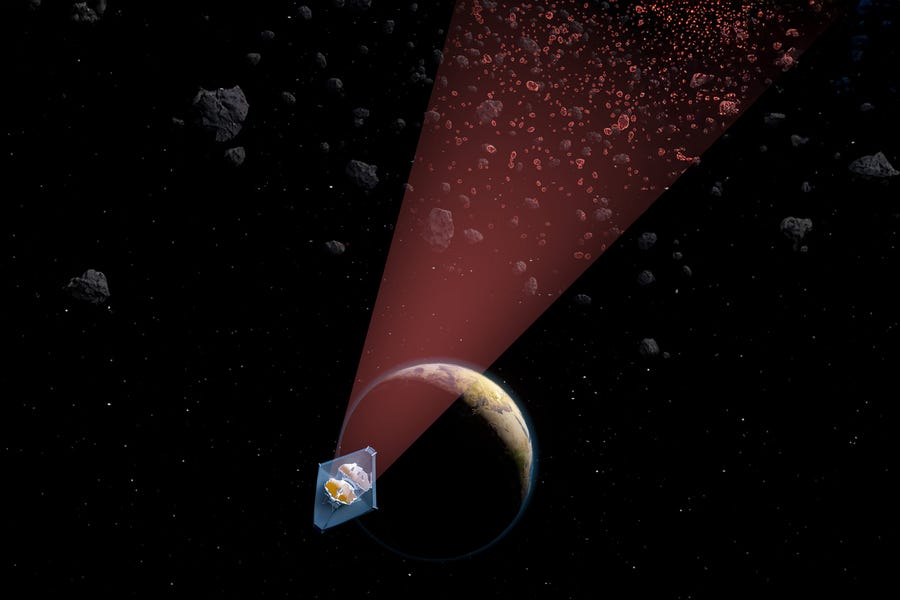
Scientists at MIT have found a way to spot small asteroids within our Solar System’s main asteroid belt—which contains millions of asteroids orbiting between Mars and Jupiter. Previously the smallest objects astronomers could see there were about 1 kilometer (0.6 mile) across, but a new approach lets them see rocks as small as 10m (33 feet). It’s already been tested, with 138 new asteroids discovered, ranging from “the size of a bus to several stadiums wide…the smallest asteroids within the main belt that have been detected to date.” The trick was using JWST data as it peered at the TRAPPIST-1 system 40 light years away, and look through the background ‘noise’ to find objects within our own Solar System. (MIT)
AI, Energy, Engineering, & Physics
Microbots took a big step forward with researchers in South Korea developing a swarm of magnetic bots that worked together in ant-like fashion to pick up and manipulate objects many times their size and weight. They were also able to envelop “a pill that weighed 2,000 times more than each individual robot, enabling the swarm to transport the drug through the liquid,” and “unclog tubes that resembled blocked blood vessels.” They honestly look like insects, it’s pretty cool. (Tech Xplore)
Open AI has announced o3, their most advanced reasoning model yet. It was able to solve 25% of the FrontierMath set of problems, designed for “expert-level mathematicians.” It does seem though that o3 gets stumped by some questions that are easy and straightforward for humans. As I said earlier, I feel like we may end up with AI that beats PhDs in every field pretty soon (this year), but no JARVIS yet. Though I’m sure that will come fairly soon as well—I’d be shocked if we didn’t have it by 2030. (Christian Hendriksen) (ARC Prize)
Unitree Robotics B2-W model looks pretty impressive, navigating all sorts of terrain with elegant and frankly acrobatic ease. Applications for search and rescue come immediately to mind, as do uses for the police and military. Hypothetically, how might you defend against an army of these? Good question says Palmer Luckey, founder of American high tech weapons maker Anduril Industries—stay tuned. (Unitree)
NVIDIA has released their Jetson Orin Nano Super Developer Kit—a hand sized tool for everyone from hobbyists and students, to commercial AI developers—for $249. The system can run at 70 trillion operations per second (a 70% increase from previous models), 102 GB/s memory bandwidth (a 50% increase), and 25 watts of power consumption. (NVIDIA) (The Humanoid Hub)
AI can now read and translate American Sign Language in real time, with 98% accuracy. Florida researchers that built the system say that it “could potentially transform how deaf and hard-of-hearing individuals interact with technology and the world around them.” (Study Finds)
China has found a way to make “high-purity iron that can be directly used for casting or ‘one-step steelmaking.’” It speeds up the process by 3,600x, taking a 5-6 hour process required by current blast furnaces and reducing it to seconds. The method works by triggering an “explosive chemical reaction” by injecting fine iron ore powder into a hot furnace, resulting in high purity iron droplets pooling “at the bottom of the furnace.” This method also does away with the need for metallurgical coal, making it cheaper than current steel production. (SCMP)
Researchers in Hong Kong have designed what they call a “laser-powered artificial neuron,” mimicking how neurons in the human brain work, except much faster—around 10 billion times faster than its natural analogue. Might this be the beginning of the development of the positronic brains of science fiction? (Dr Singularity)
Google Labs has introduced Whisk, which lets you use images and prompts as a starting point for AI-driven creativity. It might be a great way to do comics or kids books. For all you aspiring authors out there, you might not need an illustrator anymore. They also introduced Veo 2, Google’s “video generation model which produces realistic, high-quality clips from text or image prompts.” (Google Labs) (Rowan Cheung)
Grok is now free for everyone to use on X—no premium account needed. If you’ve used Grok, what do you think of it compared to other LLMs like ChatGPT? Personally I feel like GPT is better still for most things, but it’s pretty good and the gap could close quickly when Grok 3 is released. X is also planning to compete on email—against the popular Gmail specifically. Not many details on Xmail yet, but I assume we’ll hear more this year. (@cb_doge) (Mario Nawfal)
Medicine
South Korean researchers have successfully produced dog blood in vitro. Being able to produce blood in a lab like this will have hugely positive implications for veterinary medicine—and of course, the idea is that not too far down the road this could be done for humans too. So far only red blood cells were produced, but that is the most vital component of blood, carrying oxygen around our bodies. (Interesting Engineering)
Neuralink might be getting some competition in the quest to make better brain-computer interfaces (BCI). Californian company Science Corporation has built what they call a biohybrid implant that uses living neurons to bridge the gap between the implant and the patient’s brain. It makes a connection with far less (no?) damage to the brain, and potentially a far denser—and better—integration than purely artificial devices. In China, another BCI device called NEO (Neural Electronic Opportunity) has already been implanted into three human patients, with excellent results so far, allowing partly paralyzed individuals to regain some use of their bodies. A larger trial is planned, and if successful the device could move into clinical use by 2027. (Singularity Hub) (Interesting Engineering)
Lung fibrosis is caused “by an excess amount of scarring, formed when fibrillar collagen accumulates in the lung,” often resulting from “exposure to environmental irritants,” or as a long term consequence from lung diseases or side effects of some cancer drugs. The end result is stiffening lung tissue, and can ultimately result in lung failure. There’s no cure, but new research shows a common drug may help. Dextromethorphan is an ingredient in many cough syrups, and has been shown to “impede the collagen that forms scars inside cells, reducing lung fibrosis.” Every little bit helps. (Medical Xpress)
I may have mentioned this already in a previous issue, but I’m going to briefly again. A recently developed molecule called LaKe “mimics the metabolic effects of strenuous exercise and fasting,” increasing levels of lactate and ketone, granting similar benefits to those experienced by running 10km (6 miles). Essentially an exercise pill, very helpful for those who are limited physically, and potentially for all of us with our much more sedentary lifestyle. Another piece of research could mimic the benefits of calorie restriction without actually reducing calories—including longer life and healthspans. Researchers found that lithocholic acid (LCA) increased in calorie-restricted mice, and was also higher in some human centenarians. Calorie restriction in a pill soon? (Neuroscience News) (Nature via Samuel Hume)
AI is rapidly surpassing doctors when it comes to reasoning and complex diagnoses. It’s not even close, with OpenAI’s o1 model being correct ~80% of the time, versus just ~30% for human doctors on some of the most unusual and challenging cases in medicine. I feel like we’re getting close to the place where doctors who don’t use the proper AI tools to assist in case analysis and diagnosis may be guilty of negligence. It’s not just diagnosis either, a new AI-powered method of eye surgery has given a legally blind woman in Britain better than 20/20 vision. It worked by creating a digital clone of her eyes, and running around 2,000 different simulations with virtual lasers to determine the best way to do the surgery. (arXiv via @deedyas) (Solamente Tu) (Dr Singularity)
An experiment in ferrets—good animal models for human lungs—has shown than an inhaled gene therapy was successful in editing lung cells. The obvious application is to edit genes in various lung diseases, such as cystic fibrosis. Speaking of which, another study used the same sort of gene editing (mRNA lipid nanoparticles) to revert “50% of mutations in CF lung stem cells [back] to wildtype.” I feel like a marriage of these two studies would be the next logical step. (Nature via Samuel Hume) (Samuel Hume)
A new compound called HPH-15 might be even more effective than metformin for diabetes control. It reduced “glucose and fat accumulation more effectively than metformin, with added benefits like antifibrotic properties and a safer profile.” This could be hugely helpful for managing diabetes, or even preventing it in those with pre-diabetes, or those who are simply at risk due to excess weight. Hopefully there’s human trials soon. (SciTechDaily)
Biotech & Agriculture
Agricultural scientists have found a gene they called Booster in poplar trees that “boosts photosynthesis and growth by up to 200% in controlled conditions and 30% in the field.” Inserting it into other plants led to significantly increased growth as well, meaning that this could have potential for use in crops. Booster itself is fascinating, as it’s what’s called a chimeric gene—in this case containing sequences from what were originally three separate genes from three different organisms: One from a bacteria found in the tree’s roots, another from an ant that farms a fungus commonly infecting poplar, and one from part of the plant gene for Rubisco—an essential protein for photosynthesis. (Phys.org) (SciTechDaily)
Scientists at Stanford University and the Chan Zuckerberg Initiative have proposed building “detailed digital replicas of human cells.” These virtual cells could lead to breakthroughs in medicine and drug discovery, agriculture, and help turn cells into mini factories to produce desired compounds. Imagine for instance that you have cancer, and a digital copy of your cells is created so that thousands of drugs could be (virtually) tested to find the one that works best. It hasn’t been built yet, but if it works as advertised it will make some massive changes in medicine. (Study Finds via Dr Singularity)
As we start into the new year, here’s a reminder of the anti-progress, anti-environment, and ultimately anti-human nonsense we’re fighting against. AquaBounty Technologies, a Massachusetts company that planned “a better way to feed the world” by genetically modifying salmon to grow faster, has gone under. Despite evidence that the salmon were perfectly safe for human consumption, environmental groups publicly maligned the company, probably contributing to its inability to raise further funds, which is why the company is shutting down. The one bright spot is that this sort of technology isn’t going away, so someone else will hopefully pick up the torch and run with it. (Genetic Literacy Project)
Weird & Wonderful
Downloading information into your brain—to learn a new language for instance—is a staple of science fiction. But now a team of American researchers are starting to make it science fact, showing that it’s possible to “induce learning through the direct manipulation of brain activity patterns,” and bypassing “learning processes that require effort, study, or practice.” Very early days yet, but this could open a door to that sci fi future we’re hoping for. (Interesting Engineering)
Rare Earth Elements (REEs) are vital for all sorts of technology—to the point where our civilization would fall apart without them. Unfortunately, most of the world’s current supply is controlled by China. Turns out there’s a huge source of REEs inside the U.S. however, in the form of coal ash—what remains after coal has been burnt for fuel. Until now it’s been regarded purely as waste material, but there could be up to 11 million tons of it concentrated in coal ash dumps around the country. The technology to extract it economically is being developed; and if successful, it could be a gamechanger for the REE market, helping ensure a secure U.S. supply. (Future Timeline)
It turns out that some ferns can evolve backwards, reverting to more general forms and reproductive strategies. This has generally been considered to be impossible, with descendants usually being more optimized to survive and thrive in their specific environment than their more general forbearers, which locks them in genetically to a less generalized form. But, these ferns don’t care what we think is impossible, and having this flexibility is likely a good survival strategy for them. It means they aren’t locked into a single strategy if their environment later changes, but instead retain the flexibility within their genome to adapt by becoming more generalist than their immediate ancestors. (Science Alert)
Caltech researchers have put a number to the speed of human thought: around 10 bits per second, which is almost standing still compared to the speed of an average WiFi connection, around 50 million bits per second. It’s also a tiny amount compared to the sensory input our bodies gather and send off to our brains, information at a rate of roughly one billion bits per second, or 100 million times faster than our thought processes operate. It’s a lot slower than expected honestly. There are two likely options that I can see that could explain this. Option 1: We’re missing something. I’d say that’s highly likely. Option 2: The brain is just so awesome that it can suss out everything it needs to paint a picture of the world around us even with such minimal final input. Or (most likely) both + other things that we have no idea of at present. One thing is for sure though, our brains are incredible, and there’s still a lot we don’t understand about how they work. (Caltech via Corey S. Powell)
Photos & Videos
Have a look at this beautiful composite image of our Moon, curtesy of Andrew McCarthy. You can download the picture at full resolution for free on his website here. (Andrew McCarthy)

NASA has put together a timelapse of our Solar System’s gas giants, taken by the Hubble Space Telescope over the last 10 years. The changes may appear subtle, but they’re there if you look. The Great Red Spot on Jupiter is a bit smaller now than it was a decade ago for instance. Take a look at Saturn, the orientation of its rings are slowly changing relative to our perspective here on Earth, till later this March they’ll briefly disappear entirely before reemerging. (NASA)



Lest you accuse me of only doing space photos, here’s a few of my favorites from the 2024 Comedy Wildlife Awards. (New Atlas)
Now back to your regularly schedules space pics. Dragon departing ISS. Clock the image to see the linked video on X. (Don Pettit)
Lastly, here’s Boston Dynamic’s Atlas robot dressed in a Santa suit, doing a backflip. The robots may be about to take over, but at least they’ll be jolly! Click the image for the video. (Boston Dynamics)
Recommendations & Reviews
I recently finished reading Theft of Fire, by new author Devon Eriksen. It was a great read, the kind of science fiction that gives a nod to classics like Robert Heinlein without being at all derivative. It also reminded me a little of The Expanse, though I feel like that’s more a product of its being set in a similar time and place—where humanity has spread throughout the Solar System.
Pacing is excellent, and kept me engaged through the entire story, without the narrative feeling either slow or too rushed. Very impressive considering that it mostly takes place between three characters on one spaceship, all without making the story seem cramped or dragging. The characters themselves are dynamic, and developed well over the course of the book; by the end you’re really caring about their fate in a big and rather unhelpful universe. It’s gritty, but not dystopian, and manages to work in a lot of humor without being at all flippant. My one reservation is that this book is definitely not for kids or young teens (not a Heinlein type youth novel). As I believe the author would agree, there are some discussions which are adults only, whether in real life or in books.
It's refreshing to see noble virtues like courage, trustworthiness, and sacrifice shine through in the story these days—particularly when so much writing these days is deliberately morally ambiguous at best, and “woke” at worst.
This is hard sci fi done right, with superb engineering and believable battle sequence details added which just make the book that much better. Though the science behind some of the tech isn’t explained, it’s presented in a very believable way, instead of as an appeal to “magic.” Worldbuilding is absolutely top notch, giving you a Solar System that feels lived in, complete with some great backstory. I particularly enjoyed his description of one well known individual (you’ll have to read the book to find more), who he describes in detail without actually naming. But everyone knows immediately who it is.
This book being the author’s first published work, I was extremely impressed. I’m sure his second—the plan is a 4 book series—will be even better. By saying that I’m not putting down Book #1 at all, just commenting that for new authors (good ones, which Eriksen is) their subsequent books are often even better than their first. For me personally, I’m really looking forward to Book #2, and I’ll definitely be giving it a read once it comes out.
In the meantime, you can check out Devon's website here, where you can also read the first three chapters from Theft of Fire.
That’s it for now, but Techno-Optimist will be back in your inboxes in two weeks. Don’t forget to get your predictions in for 2025! Thank you all for reading—and until next time, keep your eyes on the horizon.
-Owen





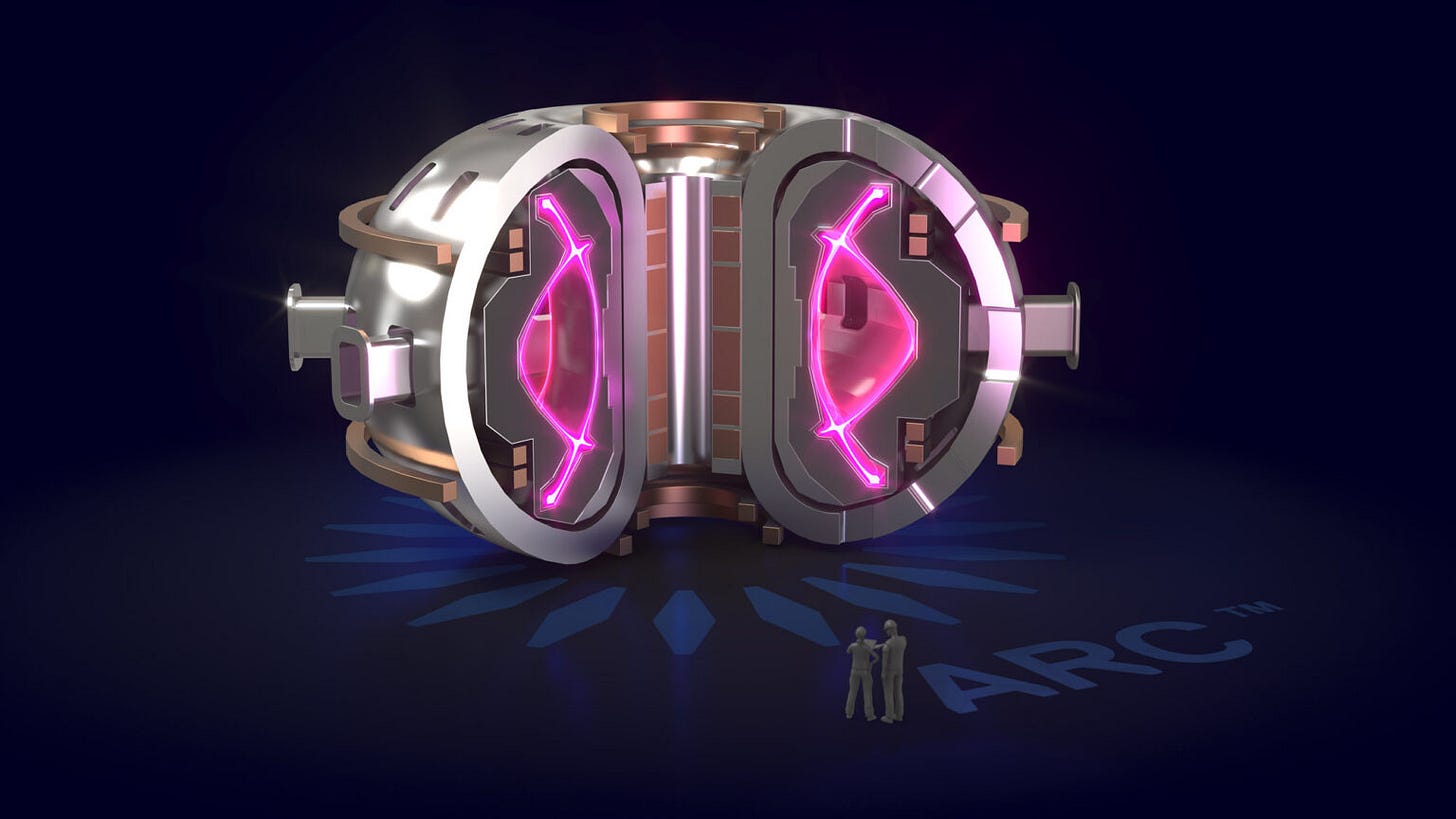
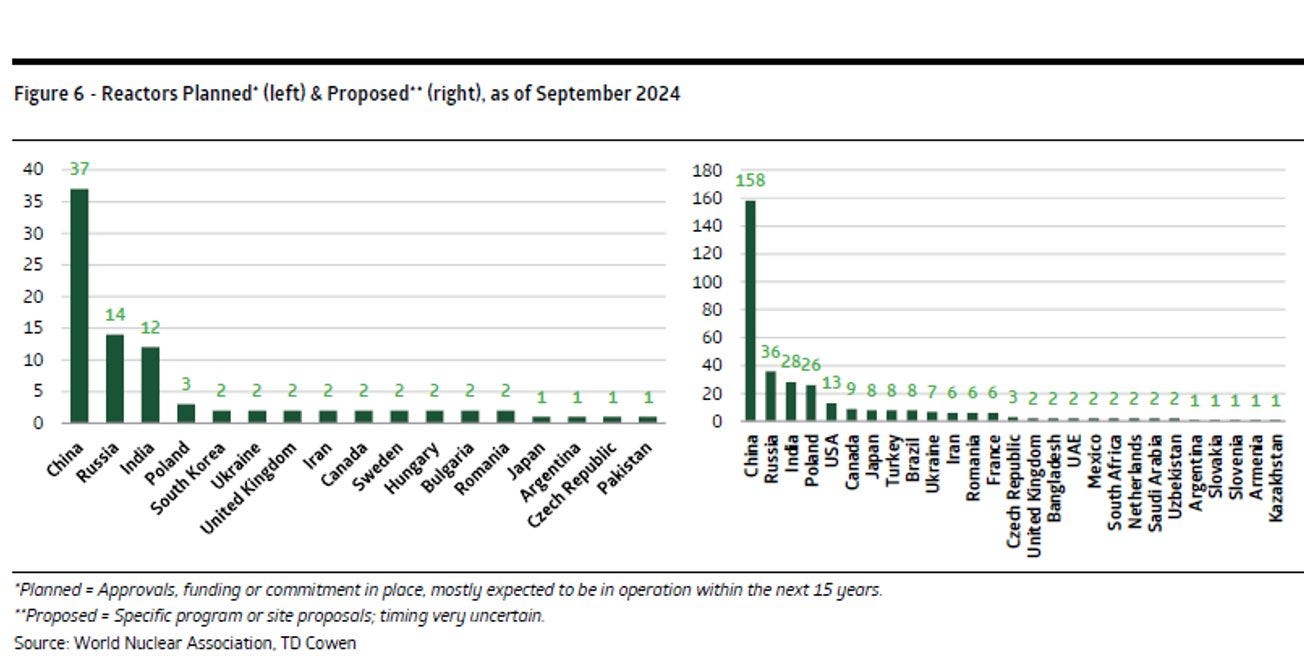



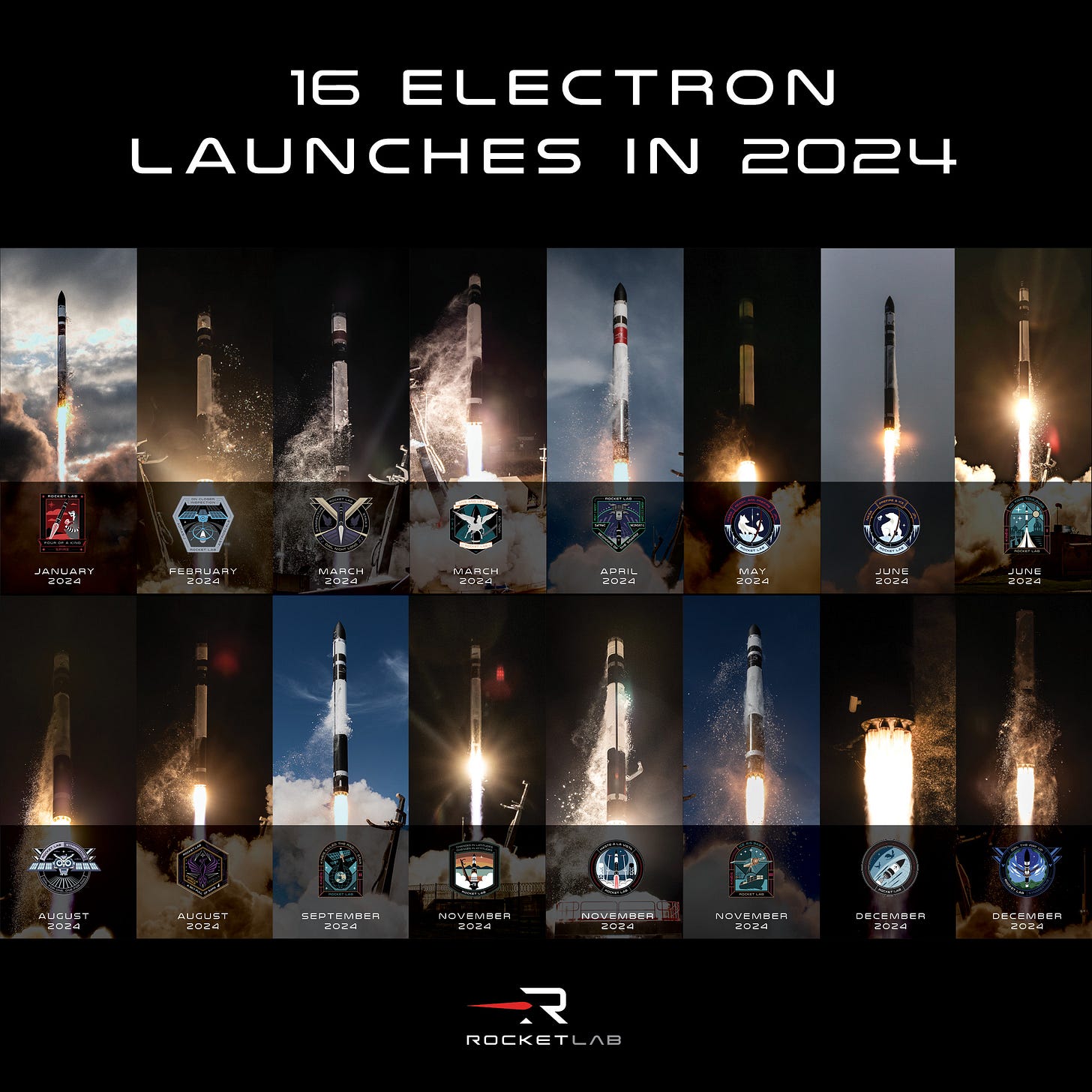

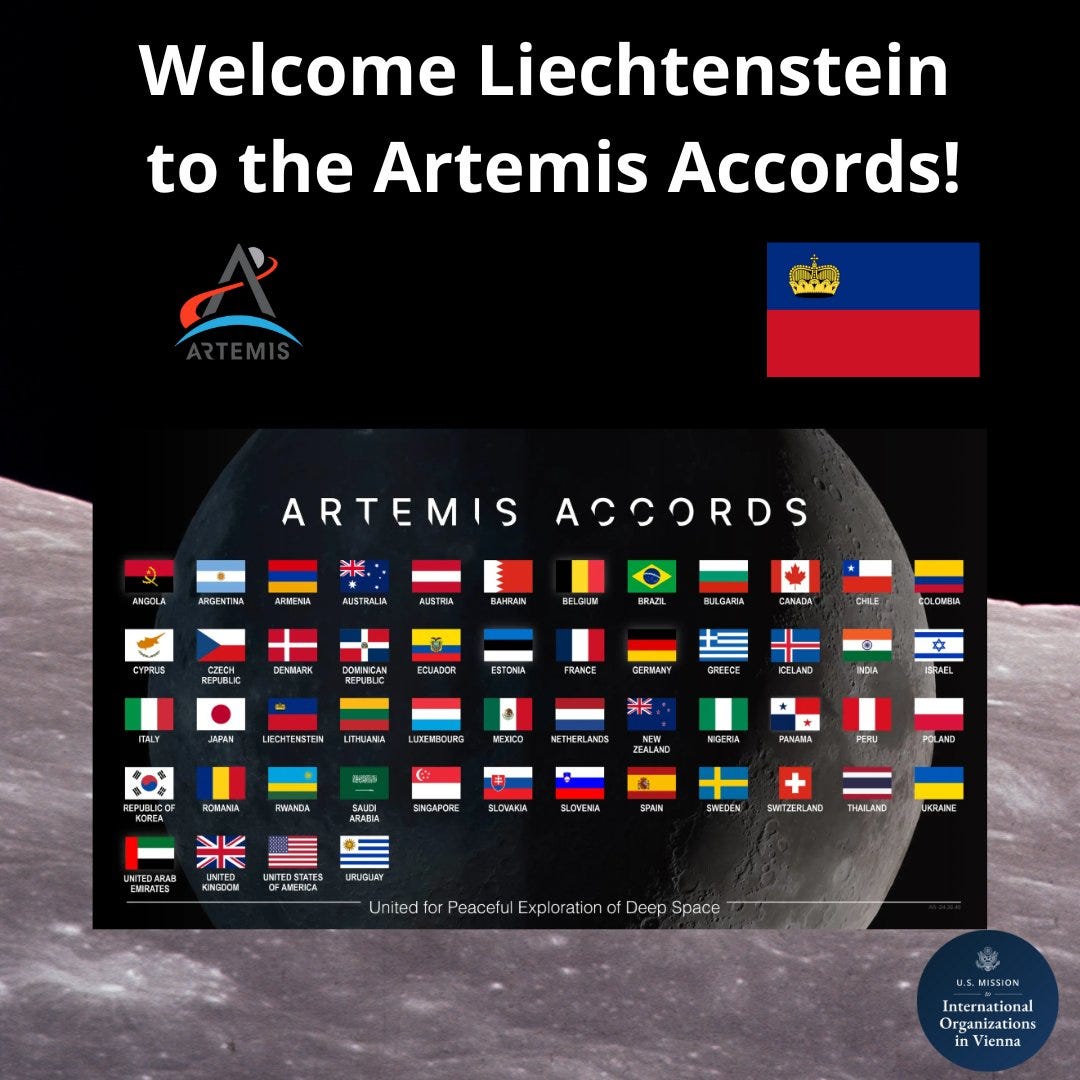
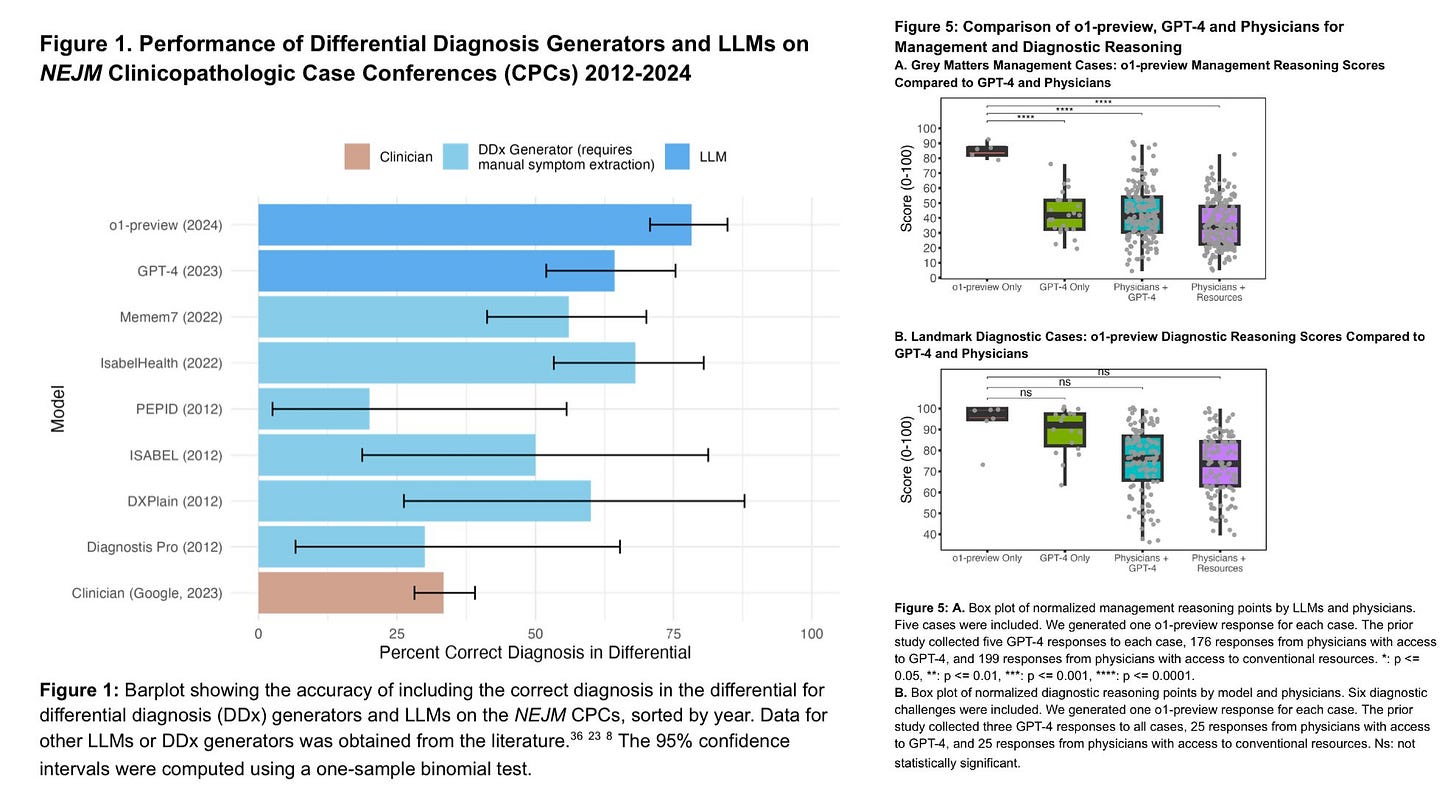
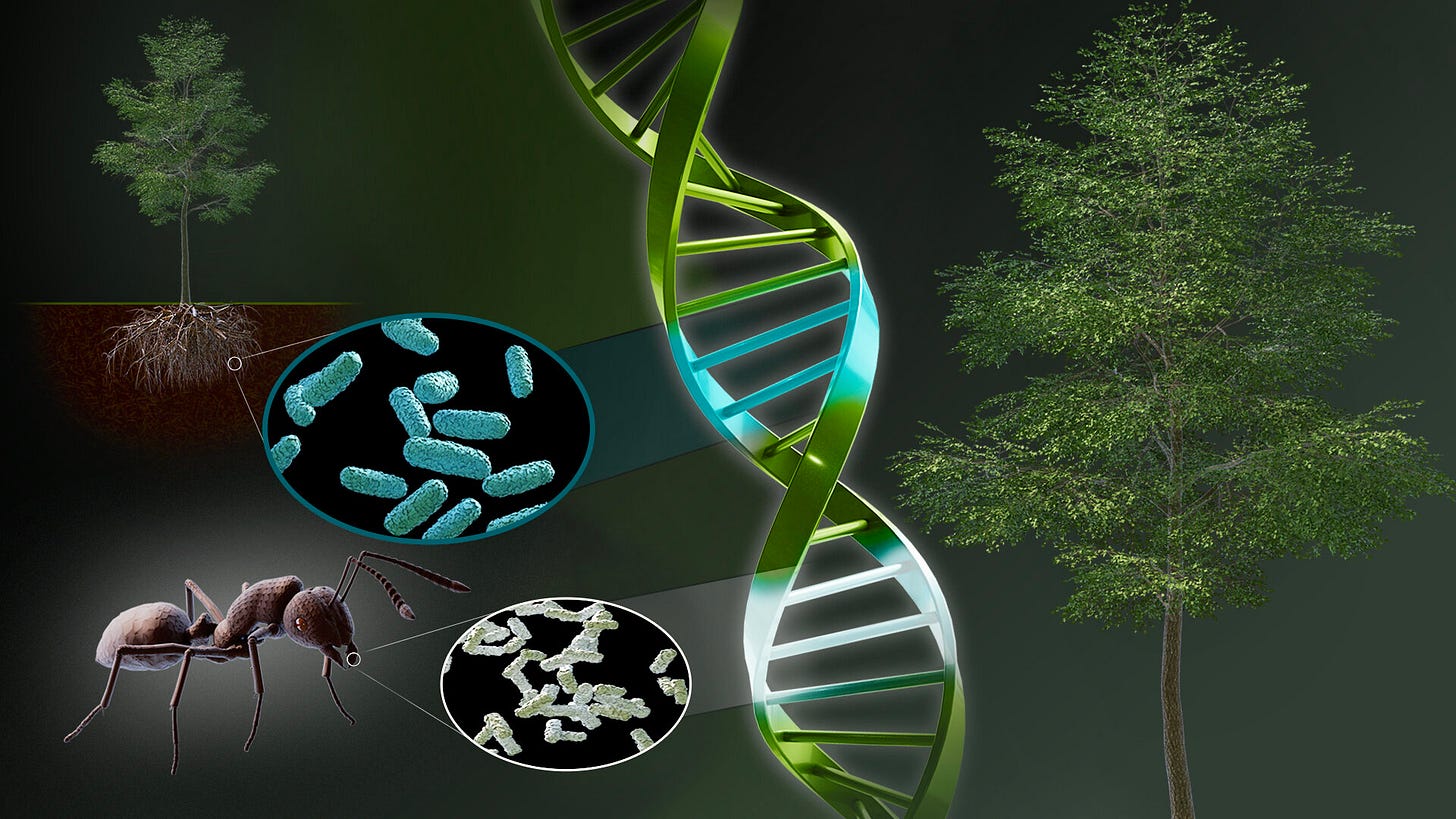

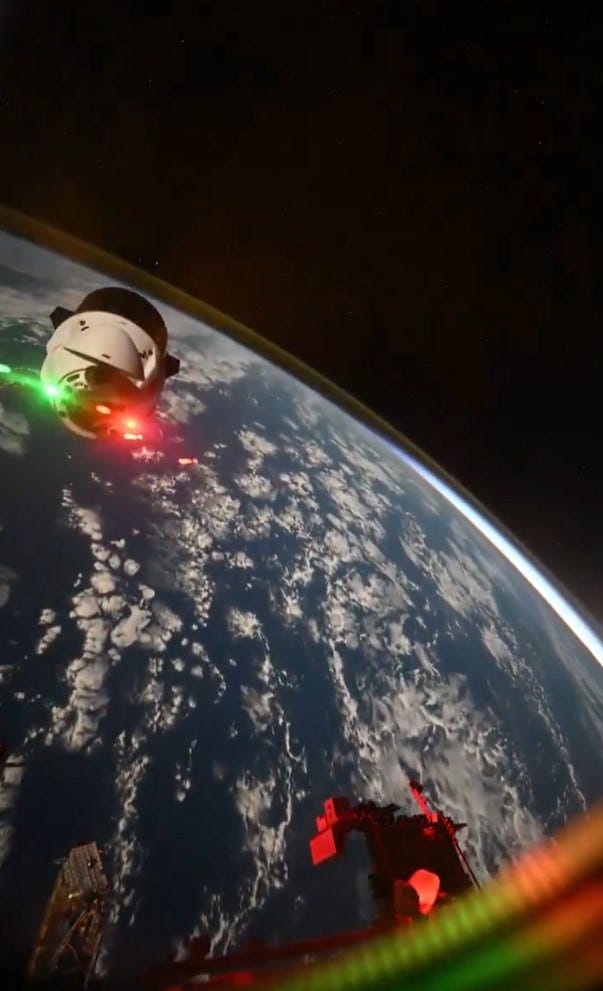

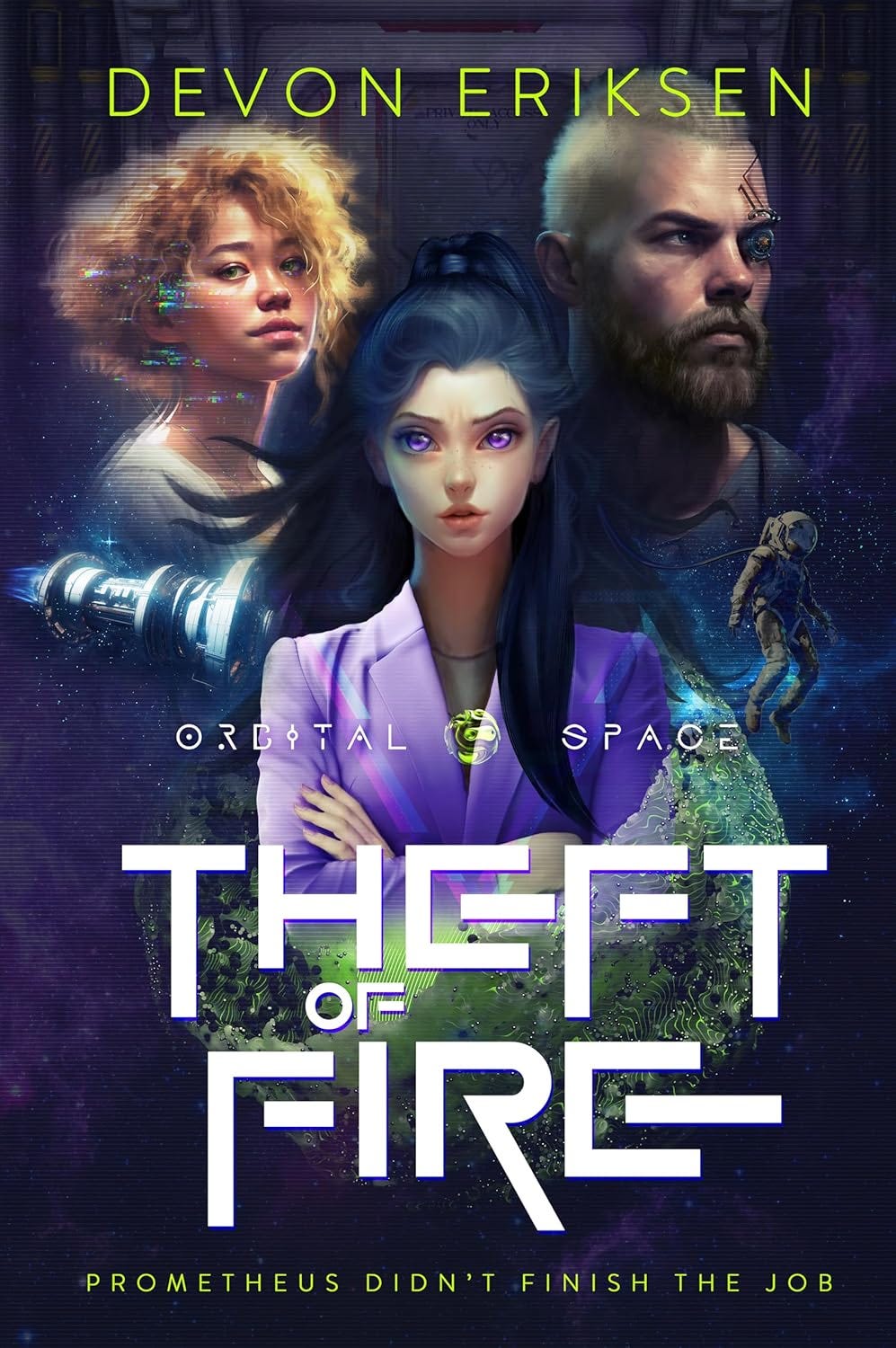
Great update as ever. Thanks for the fiction recommendation at the end, that definitely looks worth checking out.
I like Grok best, but it's because most of the research and information I need is related to public manipulation for political purposes. It's the best AI I have found to use for anything that might get dinged or cause some type of woke lecture or behind-the-scenes input added or erased in regards to a social problem. I guess it all depends on what you need.